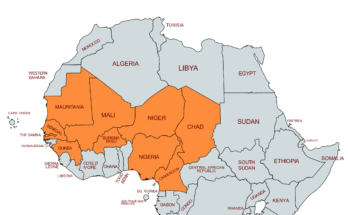by Shaun McDougall, International Military Markets Analyst, Forecast International.
The Royal Canadian Air Force hopes that investing in simulators will save money in the long run by reducing the strain placed on aircraft fleets. The service plans to spend CAD544 million on simulators and training systems over the next decade, which officials say could save CAD2 billion over the next 20 years. Increased use of simulators would reduce fuel spending and cut down on aircraft maintenance costs while also freeing up aircraft for actual missions. Training time could also be shortened, with an internal analysis finding that a CH-149 simulator could reduce the length of the First Officer training course from 16 weeks to 10 weeks. “This will make the RCAF even more responsive and relevant to Canada’s defense needs,” according to the service’s recent simulation strategy, dubbed RCAF Simulation Strategy 2025.
The simulation strategy is broken out into three spirals. In the near term, the RCAF will focus on optimizing existing systems, and addressing training deficiencies for the CH-149 Cormorant, CC-150 Polaris, and C-17 fleets through the acquisition of new training systems. “These fleets currently conduct their training using outside-of-Canada training devices, which results in the RCAF having no control over the training content and/or aircraft configurations that are not compatible with RCAF configurations – resulting in negative training,” the strategy says. The military’s Defense Acquisition Guide lists a tentative contract award for this equipment in 2018. Spiral 2 will focus on optimizing linked training devices to create a virtual battlespace between various fleets. The service has identified key fleets for this effort, which includes integrating the CP-140 fleet with other fleets such as the CH-148 Cyclone helicopter as well as Royal Canadian Navy training assets. Spiral 3 will address any requirements for new training devices that may arise.
The new RCAF simulation strategy reflects a growing trend within the Canadian Forces to minimize the amount of time and money needed to train personnel. The Canadian military has faced multiple budget cuts in recent years, putting a strain on everything from maintenance and training to the acquisition of new weapons systems. Expanding the use of simulators can streamline the training process, and reduces costs at the same time.
The Army is in on the action as well with a requirement for vehicle simulators that will be procured through the Land Vehicles Crew Training System program. The focus of the program is to train personnel to operate LAV III vehicles and Leopard 2 tanks. The system will comprise network-capable simulators at five military bases (Gagetown, Valcartier, Petawawa, Shilo and Edmonton). Training for other vehicles will also be addressed with low-fidelity simulation or through other projects. The program is valued at up to CAD499 million. A Request for Proposals is currently scheduled for 2017, with a contract award coming as soon as 2018.
The question now is whether these various aircraft and vehicle simulators can be procured on time. The government recently deferred CAD3.1 billion worth of procurement funding due to program delays and an effort to rein in the federal deficit. A multitude of other programs are also facing delays due to recent budget cuts. Because of the potential savings involved, however, the military will likely prioritize the acquisition of new simulators and training systems.
For 50 years, Forecast International intelligence reports have been the aerospace and defense industry standard for accurate research, analysis, and projections. Our experienced analysts compile, evaluate, and present accurate data for decision makers. FI's market research reports offer concise analysis of individual programs and identify market opportunities. Each report includes a program overview, detailed statistics, recent developments and a competitive analysis, culminating in production forecasts spanning 10 or 15 years. Let our market intelligence reports be a key part of reducing uncertainties and mastering your specific market and its growth potential. Find out more at www.forecastinternational.com




